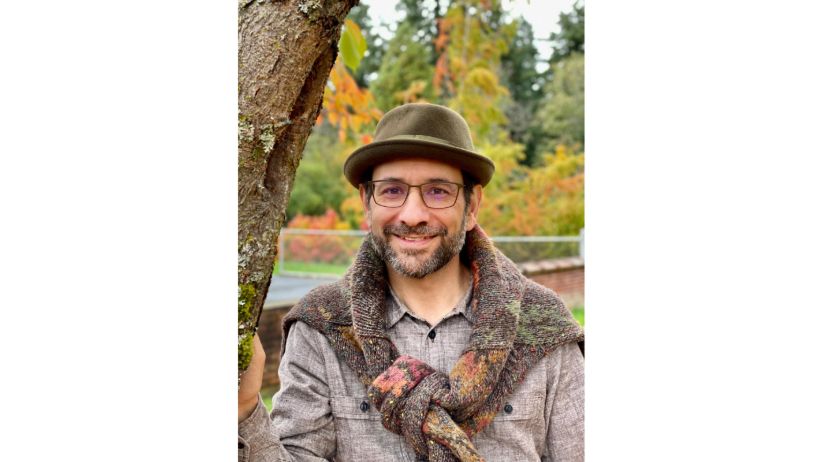Oasis Songs: Musings from Rav D
Friday, January 14, 2022 / 12 Shevat 5782
Summary: This week’s Oasis Songs grapples with two different ways to think about inclusion and offers two opportunities, each of which represents one of those types of inclusion.
Reading Time: Four minutes
As I see it, there are two primary types of inclusion. One is a basic requirement of a democracy and is fundamental to the national identity. The other form of inclusion furthers a specific mission. Both types of inclusion can be valuable, but since they have different goals, it is important to distinguish between the two.

When it comes to a democratic country like America, which is founded upon an aspiration for equality, inclusion is not instrumental. Including groups that historically have not had the franchise, for example, defines the very purpose of America. Inclusion is an essential element of this country. Advancing women’s rights or addressing racism should not be viewed as partisan causes, but rather as America striving to be herself.
This Monday marks Martin Luther King, Jr. Day. Commemorating his life seems a fundamental exercise of what our nation has aspired to be. For that reason, I wanted to alert you to a meaningful opportunity that our former president, Jason Kaufman, brought to my attention. January 18th is the 2022 National Day of Racial Healing. On noon, please consider joining the live premiere by registering here: https://healourcommunities.org/day-of-racial-healing/
Well-intentioned people may have different opinions about what racism is or how to best combat it, yet I don’t see how anyone who believes in America and its promise of freedom and inclusion could oppose efforts to reduce the stigma of America’s longest hatred.
The second type of inclusion shares some of the same open arms as the first, but it is essentially instrumental to a greater or more primary cause. When we speak about inclusion at Neveh Shalom, I view it differently than the sort of inclusion so fundamental to American democracy. Our goals at CNS are to advance and strengthen Jewish life, religion, traditions, values, and community. The goal of inclusion is to welcome anyone who wants to participate in that mission, or who view themselves as an ally of our mission. In the past, we have hired ASL interpreters for the High Holidays. We have also ensured that our building is accessible for those with special needs. A work group led by Liza Milliner spent close to a year working with KESHET to examine the ways in which our policies and procedures are most welcoming to the LGBTQ+ community. Each of these above examples are the ways in which our congregation wants Jewish life to be open to any people who feel their own commitment to our faith and values.
Because inclusion in this example is a means to an end, it means it can’t be absolute. For example, welcoming in Messianic Jews who want Jews to accept Jesus as the Messiah would be to undermine our primary mission and our commitment to God and Judaism. I am sure you can come up with other examples.
Related to this second form of inclusion, I would like to invite you participate in a special virtual event on Monday, January 31st @ 5pm (PT) in honor of Jewish Disability Awareness & Inclusion Month. This is a project of JNF with whom we are partnering. The event is called ‘Leaving No One Behind’ (see here) and will feature Academy Award-winning actress Marlee Matlin, actress, singer, and songwriter Rebecca Pidgeon, and will be hosted by playwright, filmmaker, and author David Mamet.
The event will provide an inside look at how people with disabilities and special needs are integrated into all aspects of daily life and tightly woven into the fabric of Israeli culture. You can learn more about JNF-USA’s special needs work here.
Judaism has an intrinsic understanding of these two types of inclusion. It has created a careful balance between its universalistic values and its responsibilities to the Jewish faith. In this week’s parsha of Beshalach, the difference is delineated rather sharply. When it comes to the Pharaoh and his desire to enslave and murder the Jews, or to the Amalekites who prey on the weakest members of society, Judaism has no room for inclusion. No people or group needs to be so open-minded as to threaten their own existence or well-being.
Simultaneously, a goal of religion is training us to live from a place of love and gratitude for all of God’s children. Fostering both forms of inclusion is part of that work.
Shabbat Shalom,
Rav D
Shabbat Table Talk
- Do you agree with the two types of inclusion outlined above? Why or why not?
- When have you felt included and when have you felt excluded? What have you done to resolve the times you felt left out?
- When have you excluded someone? What led to you taking that action?
If you’d like to continue this discussion, follow this link to CNS’s Facebook page to share your own perspectives on the topics raised in this week’s Oasis Songs. Comments will be moderated as necessary.



